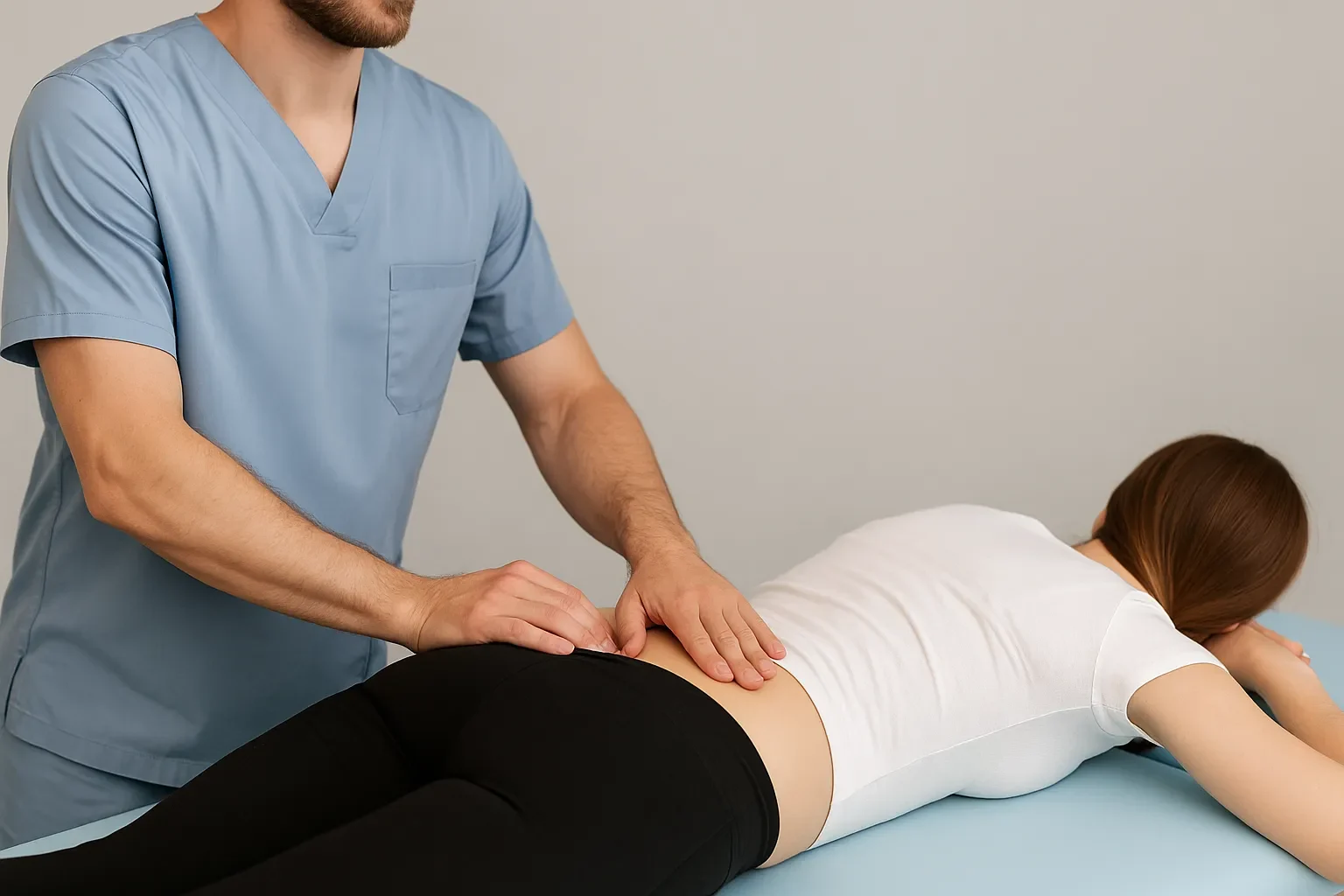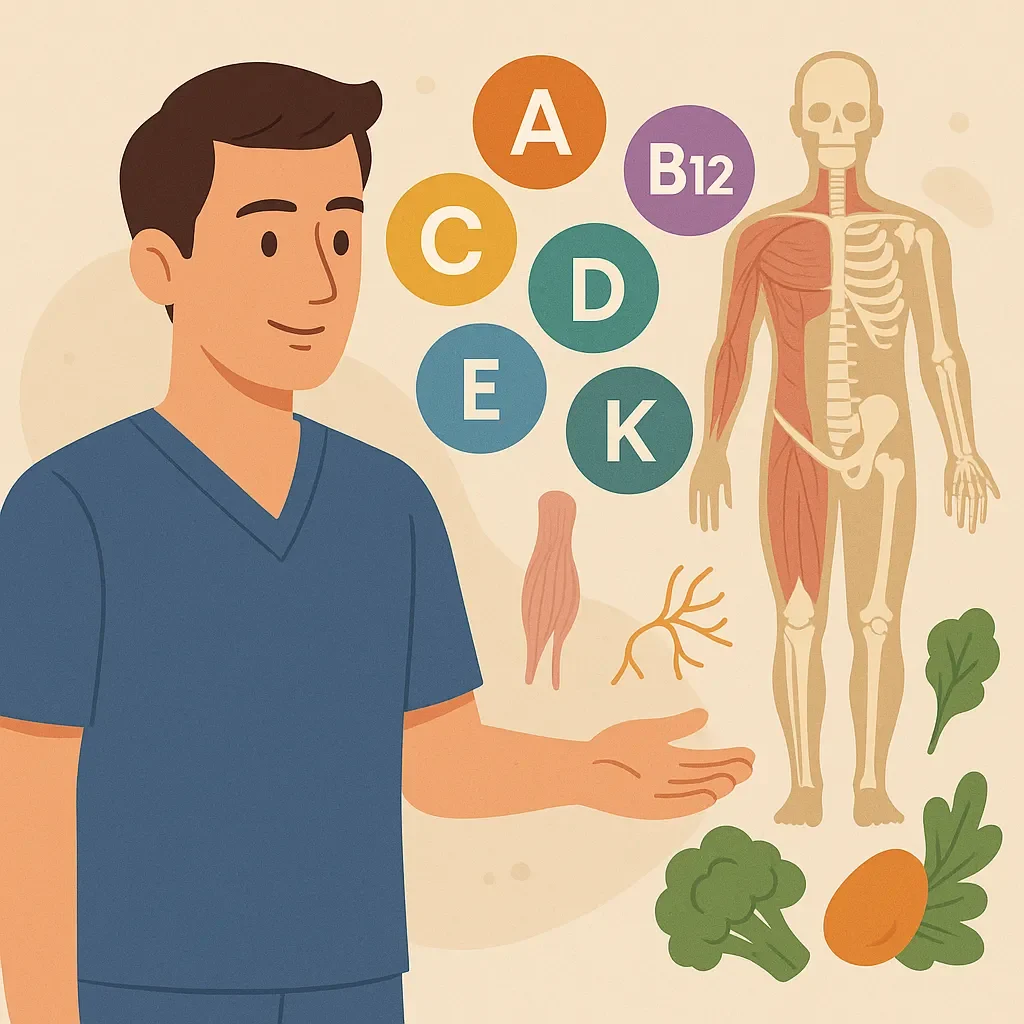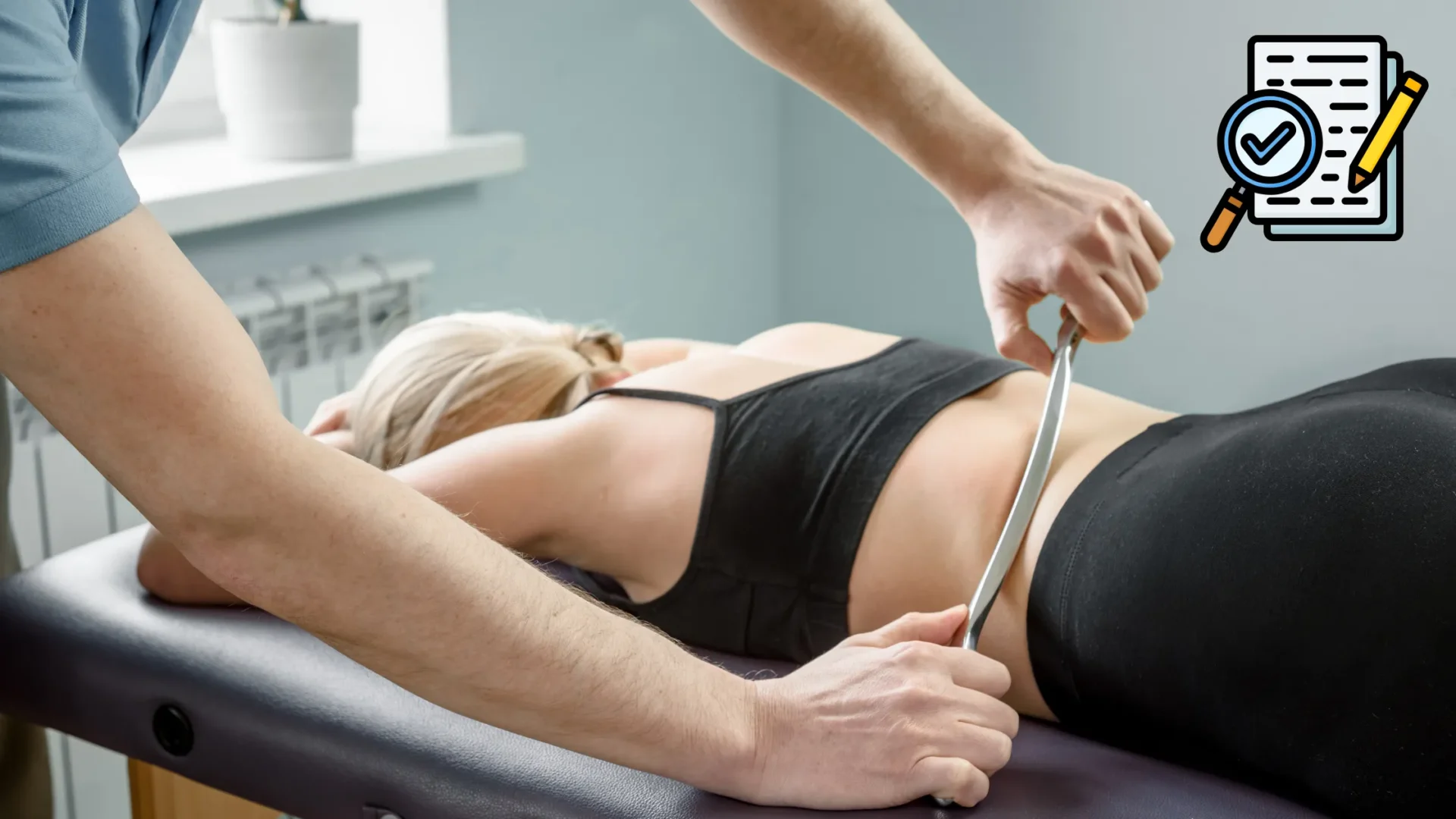The reliability of palpation—particularly when assessing asymmetry in the pelvis and lumbar spine—has long been a cornerstone of osteopathic practice. A recent review by Stovall and Kumar, published in the Journal of the American Osteopathic Association, critically examined whether clinicians can consistently identify bony landmark asymmetries in the lumbopelvic region. Their findings raise important questions for both practitioners and educators in the osteopathic profession.
What the Review Looked At
The authors analyzed 23 studies, of which only nine met inclusion criteria. They focused on the inter- and intra-examiner reliability of palpating common landmarks such as the anterior and posterior superior iliac spines (ASIS/PSIS), the inferior lateral angles (ILAs) of the sacrum, the sacral sulcus, and lumbar transverse processes.
The central question: Can two different examiners, or even the same examiner at different times, agree on whether asymmetry exists?
The results were sobering:
- Inter-examiner reliability (agreement between different practitioners) was poor to slight across most landmarks, with κ (kappa) values hovering near zero, indicating no better than chance agreement in many cases.
- Intra-examiner reliability (consistency within the same practitioner) was somewhat better, but still modest.
Even when examiners underwent training or consensus calibration, improvements in reliability were inconsistent. For example, ASIS assessments showed modest gains after training, while sacral sulcus palpation remained highly unreliable.
The Fallacies in the Research
While the review highlights real weaknesses in palpatory assessment, it’s important to consider the methodological issues that complicate interpretation:
- Study Design Variability: Different studies used different populations (symptomatic vs. asymptomatic), different numbers of examiners, and varied training levels. This makes comparisons and conclusions difficult.
- Artificial Thresholds for Asymmetry: Some studies set arbitrary cut-offs, such as 3 mm, for what counts as a “positive” asymmetry. In practice, such fine distinctions are nearly impossible to feel consistently in vivo, introducing a false sense of precision.
- Overemphasis on Single Landmarks: Clinical osteopathic diagnosis rarely hinges on one isolated landmark. Instead, palpation is integrated into the broader TART (Tenderness, Asymmetry, Restriction of motion, Tissue texture changes) framework. Focusing purely on static asymmetry strips palpation of its clinical context.
- Statistical Pitfalls: The κ statistic, though widely used, can be misleading in low-prevalence situations or when more than two outcomes exist (e.g., “right higher,” “equal,” “left higher”). This can artificially depress reported reliability.
Implications for Osteopathic Practice
For osteopaths, these findings don’t mean palpation is useless, far from it. Rather, they suggest we must be cautious in overstating the diagnostic power of single-landmark asymmetry. Clinical reasoning in osteopathy has always emphasized patterns, relationships, and functional movement, not static alignment alone.
Interestingly, while some biomechanical research has shown little link between static pelvic asymmetry and low back pain, other studies demonstrate that increased pelvic asymmetry may correlate with altered lumbar motion patterns in symptomatic patients. This indicates that asymmetry may matter, but only when viewed in the broader functional picture.
Lessons for Osteopathic Education
Perhaps the most thought-provoking aspect of this review is what it means for teaching. Students often learn Fryette’s laws, sacral mechanics, and palpatory diagnosis as if they were immutable facts. Yet the evidence shows that many of these palpatory assessments lack robust reliability.
Should we stop teaching palpation of asymmetry? Absolutely not. Instead, educators should:
- Present palpatory models honestly, acknowledging their limitations.
- Emphasize critical thinking and teaching students to integrate palpation with functional and symptomatic findings.
- Promoting critical thinking: osteopathic palpation is a craft, guided by science, but not infallible.
Moving Forward
For osteopathy to continue evolving, we need better-designed studies that reflect real-world clinical reasoning rather than artificial laboratory constructs. Reliability research should standardize protocols, use balanced patient populations, and measure palpation in functional contexts.
As practitioners, we must also remember that palpation is just one piece of the diagnostic puzzle. Like cardiac auscultation (another test with known inter-examiner variability), it remains clinically useful when combined with the totality of the patient encounter.
Final Thoughts
This review challenges us to reflect critically on a foundational element of osteopathic practice. Static asymmetry assessment, when taken alone, appears unreliable. But in the hands of a skilled osteopath—integrated with motion, tissue, and patient response, it can still provide meaningful information.
What do you think? Should palpatory diagnosis of asymmetry remain central to osteopathy, or should we shift more heavily toward functional and movement-based assessments? Share your perspective with your colleagues and join the conversation.
The Article
This article discusses findings from:
Stovall BA, Kumar S. Reliability of Bony Anatomic Landmark Asymmetry Assessment in the Lumbopelvic Region: Application to Osteopathic Medical Education. J Am Osteopath Assoc. 2010;110(11):667–674.
You can access the article here:








